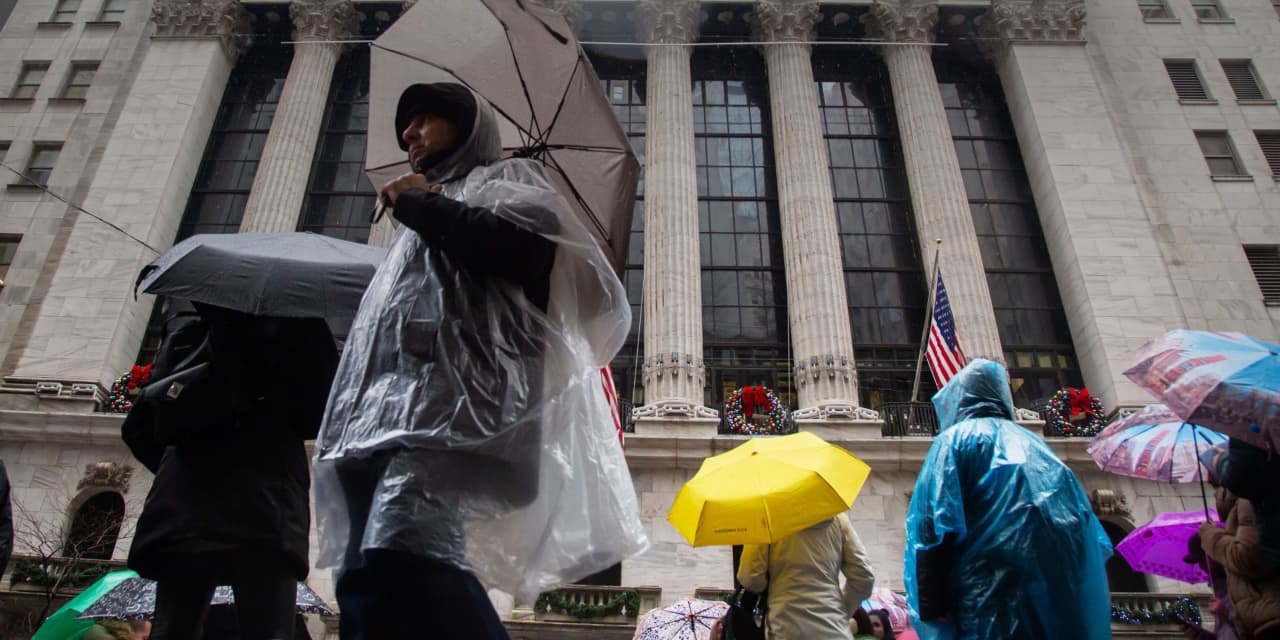The forecast for the market is cloudy at best—and there are no meatballs involved. Questions about the strength of the economy, what the Federal Reserve plans to do next, and even the path of corporate earnings won’t be answered for months, leaving certainty-starved investors feeling like they’re walking on quicksand. It’s a good time to buy stocks anyway.
The reasons for optimism start with a just-completed September, which lived up to its reputation as the toughest stretch of the year for stock investors. The
S&P 500 index
—which dipped 0.74% this past week—closed the month down 4.87%, its worst month since December, while the
Dow Jones Industrial Average
slid 1.34% to finish the month off 3.50%. The
Nasdaq Composite
dropped 5.81% in September after rising 0.06% this past week.
There was a lot to dislike about the past month. Over those 30 days, stock investors have had to contend with a “hawkish pause” by the Fed, a looming federal government shutdown, a jump in bond yields, and rising oil prices. No wonder just 27.8% of respondents in the American Association of Individual Investors sentiment survey described themselves as bullish—the lowest level in four months.
Yet even as the days darken in October, the market’s disposition should become sunnier. The most straightforward argument for a near-term bounce in the stock market is simple mean reversion. “One-month periods where stocks do nothing but go down have usually seen a bounceback effect in the period that followed,” wrote analysts at Bespoke Investment Group this past week.
The data back them up. In this September’s first 20 trading days, the S&P 500 hit an intraday low below the prior day’s intraday low 15 times, including a stretch of nine straight days of selling pressure. That many days of lower lows in such a short span had only occurred 14 times since 1993 before this September—and, according to Bespoke, the index was higher 79% of the time three months later, by an average of 8.1%.
The S&P 500 also found support this past week around 4300, as it did during pullbacks in June and August, before closing at 4288. And even if that level should break, the next one isn’t far off—it can be found at the 200-day moving average near 4200. All else being equal, market technicians would expect these levels to hold.
On the fundamental side of things, the third-quarter earnings season begins on Oct. 13, when
JPMorgan Chase
(ticker: JPM) and other large banks report. Analysts expect to see a modest 2% year-over-year increase in S&P 500 earnings per share—but that’s after three straight quarters of negative or no growth. Not-bad results would help keep 2024 expectations for 12% earnings growth aloft.
As for all the concerns out there, they’ve just created a new wall of worry for stocks to climb—one that shouldn’t prove insurmountable. The Fed doesn’t meet again until November, so there will be a vacuum of news on the monetary policy front for several weeks. Congressional dysfunction may deliver a government shutdown, although that’s a bigger problem for the country than it is for the stock market. And we can fret about 2024 when we get closer.
Just remember, with the calendar flipping to October, stocks are also moving from a seasonally weak time of the year to a stretch that has historically been among the best—with the final months of the year culminating in a “Santa Claus rally” in December.
You don’t have to believe in Santa, though, to believe that the path of least resistance appears to be up and to the right.
Write to Nicholas Jasinski at nicholas.jasinski@barrons.com
Read the full article here













Leave a Reply